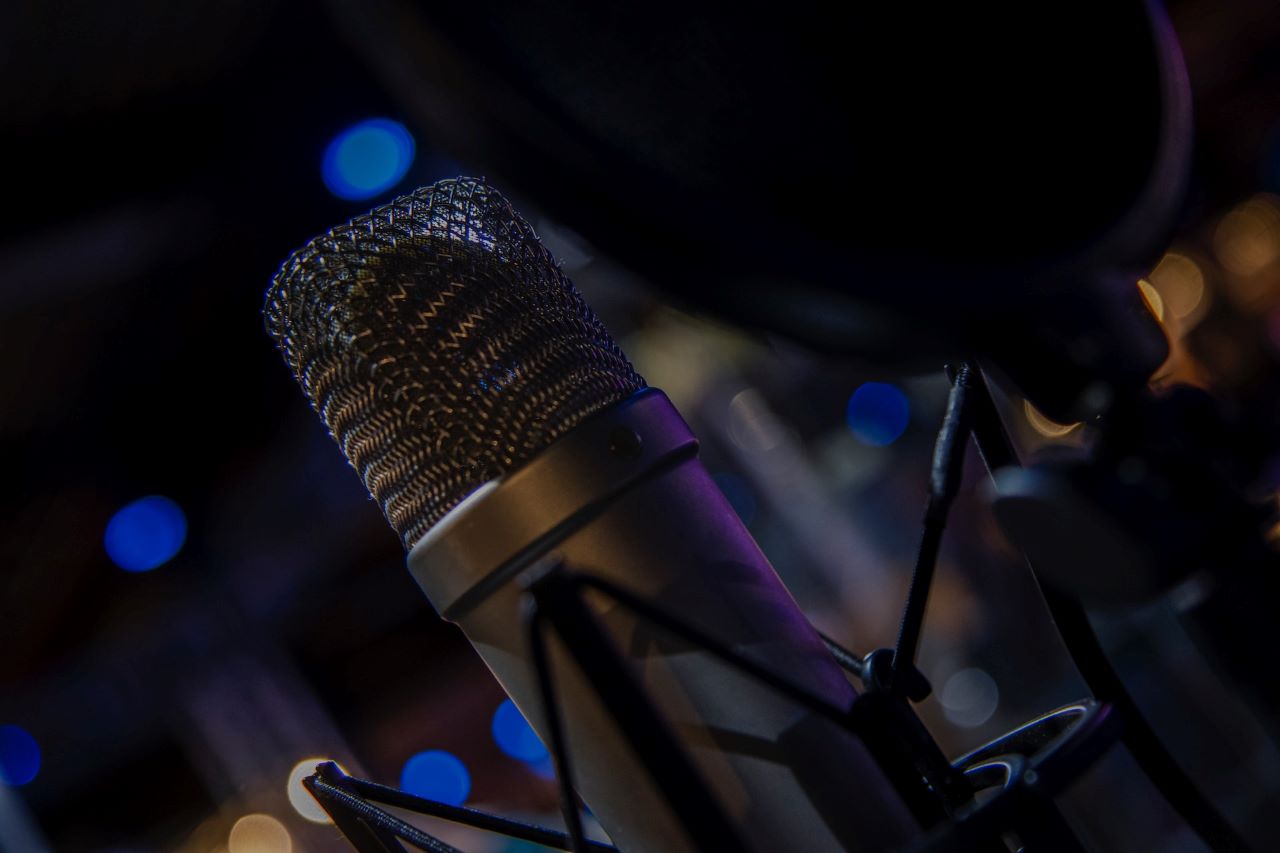Picture this: You’re setting up your microphone for an important podcast recording session, tweaking knobs and dials, striving for that perfect sound quality. But there’s one knob that often puzzles even the seasoned audio enthusiasts – the mic gain. What does mic gain do? Why is it so crucial for your audio setup?
Microphone gain is more than just a technical term; it’s the unsung hero in the realm of podcast recording. It’s the fine line between a recording that’s crisp and clear and one that’s muffled or, worse, ear-piercingly loud. Whether you’re a budding podcaster, a musician laying down tracks, or a professional in the broadcasting world, understanding mic gain is pivotal to mastering your audio game.
In this deep dive, we unravel the mysteries of mic gain. We’ll start with the basics and then explore different types of microphones and their unique gain requirements. Get ready to turn your curiosity into expertise.
Related: Best Microphones For Recording in Podcasting
Contents
What Does Mic Gain Do?
You’ve probably asked yourself, “What exactly is mic gain?” Simply put, mic gain controls the sensitivity of your microphone. It’s not just about volume; it’s about the microphone’s ability to pick up sound. The higher the gain, the more sensitive the mic becomes to sound. This means it can capture quieter noises, but there’s a catch – too much gain, and you risk distortion or unwanted background noise.
Think of mic gain like a magnifying glass for sound. Just as you adjust a magnifying glass to get a clearer view, you adjust mic gain to capture the clearest audio. It’s a delicate balance, and getting it right is crucial for high-quality recordings.
But why is it so important? In recording, clarity and quality are king. The right gain setting ensures your microphone captures your voice or instrument in its truest form, without distortion or noise. It’s the foundation of every good recording – the first step in ensuring your sound is heard as it was meant to be.
Different Types Of Microphones And Their Gain Requirements

Image by serhii_bobyk on Freepik
The world of microphones is diverse, each type bringing its own unique flavor to the table. But with this variety comes the question: how do different mics react to gain settings? Understanding this is key to harnessing the full potential of your audio equipment.
Dynamic Microphones: The Sturdy Sound Champions
Dynamic microphones, with their rugged build, are the stalwarts of the microphone world. They excel in live environments, from rock concerts to bustling newsrooms. What sets them apart is their simple design, featuring a coil of wire attached to a diaphragm, moving within a magnetic field. This design makes them less sensitive to subtle sound variations and high-frequency details but remarkably resilient to loud noises and rough handling.
When it comes to gain, dynamic mics often require a significant boost. This is due to their lower sensitivity and output level compared to condenser mics. You’ll find yourself cranking up the gain, especially in scenarios where the sound source is not loud or directly close to the mic. This increase in gain helps capture the full body of sound, ensuring that quieter vocals or instruments are not lost in the mix.
However, be mindful of the noise on the floor. Higher gain can introduce unwanted background noise. It’s a balancing act – ensuring enough gain for clarity but not so much that it compromises the audio quality.
Condenser Microphones: The Delicate Detailers
Condenser microphones are the epitome of sensitivity and detail in the microphone family. Unlike dynamic mics, condensers use a capacitor to convert acoustic energy into an electrical signal. This design enables them to capture a wider frequency range and subtler sound nuances, making them a favorite in studio settings for vocals, acoustic instruments, and any application where detail is paramount.
Due to their higher sensitivity, condenser mics generally require less gain. They are capable of picking up faint sounds with ease, making them ideal for studio environments where control and precision are key. This sensitivity, however, also means they can easily capture ambient noise or become distorted with very loud sounds. Setting the gain correctly on a condenser mic involves finding the sweet spot where every nuance is captured without overloading the mic’s circuitry.
The gain setting on a condenser mic is not just about volume; it’s about capturing the depth and texture of the sound. A slight adjustment can mean the difference between a flat, lifeless recording and one that vibrates with richness and clarity.
How Mic Types Influence Gain Settings?

Photo by Videodeck .co on Unsplash
Understanding how to adjust gain settings for different types of microphones can significantly impact the quality of your recordings. It’s not just about cranking up the volume; it’s about fine-tuning your mic to capture the essence of the sound you’re recording.
Dynamic Microphones
With dynamic microphones, the key is to find the right level of gain that adds enough volume without introducing noise. Due to their lower sensitivity, dynamic mics often need a generous increase in gain, especially when recording softer sounds or when the mic cannot be placed close to the sound source.
However, this increase in gain can bring its challenges. Higher gain levels might amplify not just the sound you want but also the background noise. This is where your environment and microphone placement become crucial. Minimizing background noise and optimizing mic placement can allow you to increase gain without compromising the quality.
Moreover, when using dynamic mics for recording quieter or more nuanced sounds, an external preamp can be a game-changer. A good preamp gain can provide the necessary clean gain boost, making your dynamic mic more versatile.
Related: How Much Gain Does RØDE PodMic Need?
Condenser Microphones
Condenser microphones, with their higher sensitivity, generally require less gain. This sensitivity allows them to capture a wide range of frequencies and subtle sound nuances, making them ideal for studio recordings where clarity and detail are paramount.
However, this sensitivity also means that condenser mics can easily pick up unwanted ambient noise or suffer from distortion if the gain is set too high. The challenge here is to balance the gain to capture the sound accurately without overloading the mic.
When setting gain for a condenser mic, start with a lower setting and gradually increase it until you achieve the desired level of sensitivity without noise or distortion. It’s also crucial to consider the acoustic environment, as condenser mics can pick up reflections and echoes that might color your recording.
In both cases, the ultimate goal is to use gain to enhance the microphone’s strengths while compensating for its weaknesses. Whether you’re using a dynamic or a condenser mic, understanding and adjusting gain settings can elevate your recordings from good to professional quality.
The Technical Side Of Mic Gain

Image by Freepik
Diving deeper into the technical realm, we uncover the intricacies that make the mic gain a pivotal aspect of sound recording. It’s not just about turning a knob; it’s about understanding the science behind it.
Understanding Signal-To-Noise Ratio
The signal-to-noise ratio (SNR) is a key concept in the world of audio. It’s the difference in volume between the sound you’re recording (the signal) and the background noise (the noise). A higher SNR means clearer, cleaner sound, as the actual audio stands out more distinctly against the background noise.
In the context of mic gain, SNR plays a crucial role. Setting the right gain level is a balancing act between amplifying your mic input signal and keeping the noise at bay. Too low, and your signal gets lost; too high, and the noise overtakes your sound. We’ll explore how to master this balance, ensuring your recordings are as pristine as possible.
The Role Of Preamps In Mic Gain
Preamps, or preamplifiers, are unsung heroes in the recording process. They’re the first stop for your microphone’s audio signal on its journey to being recorded. A good preamp amplifies the mic signal to a usable level before it hits your mixer or audio interface, doing so while adding as little noise as possible.
The relationship between preamps and mic gain is symbiotic. The right preamp can enhance the strengths of your mic, providing the clean gain needed for a dynamic microphone or the nuanced amplification required for a condenser.
The Process Of Adjusting Mic Gain
Adjusting mic gain isn’t just about turning a knob; it involves careful consideration of several factors to ensure optimal recording quality. Here’s a step-by-step guide:
Step One: Start With Low Gain
When beginning, it’s always safer to start with a lower gain setting. This approach helps prevent any sudden, unexpected loud noises or feedback that can damage your equipment or hurt your ears. Low gain also ensures that you don’t immediately overwhelm your recording with unwanted noise or distortion.
Step Two: Test and Listen
Conduct a sound check by recording a test clip. Speak or play an instrument at your normal level, then listen back to the recording. Focus on the clarity of the sound and the presence of any background noise. This step is crucial for understanding how your current setting is capturing the output digital audio.
Step Three: Incremental Adjustments

Photo by Ben Koorengevel on Unsplash
Gradually increase the gain, making slight adjustments and stopping to test the sound after each change. This methodical approach allows you to closely monitor how each adjustment affects the sound quality. It’s about finding the sweet spot where the sound is clear and robust without any hints of distortion.
Step Four: Check for Distortion
As you increase the gain, be vigilant for any signs of distortion. The distortion often occurs when the gain is too high, causing the signal to clip. It can manifest as a crackling sound or a loss of clarity in the audio. If you detect distortion, dial back the gain until the sound is clean again.
Step Five: Finalize Setting
Once you find a setting where the audio is clear, with minimal background noise and no distortion, you’ve likely found your optimal gain level. This setting should allow the natural qualities of the voice or instrument to come through without any artificial harshness or muffling.
Common Mistakes and How to Avoid Them?
Even seasoned professionals can slip up when setting mic gain. Here are some common mistakes and how to avoid them:
- Over-Amplifying: A common mistake is setting the gain too high in an attempt to capture a louder sound. This often leads to distortion and poor-quality recording. To avoid this, always start low and increase gradually, paying close attention to the sound quality.
- Ignoring the Environment: The ambient noise in your recording space can greatly impact your recording. Failing to consider this can result in a noisy, distracting audio track. Ensure your recording environment is as quiet as possible, and adjust your gain settings to minimize the pickup of background noise.
- Forgetting Mic Characteristics: Different microphones have different sensitivity levels and gain requirements. Using a one-size-fits-all approach to gain setting can lead to subpar recordings. Take the time to understand the specifications and sweet spots of your particular microphone.
- Neglecting Test Recordings: Skipping the step of making test recordings is a recipe for unexpected issues during the actual recording. Test recordings allow you to preemptively identify and rectify any sound quality issues. Always make and review test recordings before finalizing your gain settings.
Tips for Perfect Gain Setting

Image by senivpetro on Freepik
Perfecting mic gain setting requires a blend of technical knowledge and practical experience. Here are some tips to master it:
- Understand Your Equipment: Familiarize yourself with your microphone and recording gear. Each piece of equipment has its unique characteristics.
- Monitor with Headphones: Use quality headphones to monitor the sound in real-time as you adjust the gain.
- Use Visual Aids: Many recording devices have visual indicators like LED meters. Use them to guide your gain adjustments.
- Consider the Source: Adjust the gain based on the loudness of the sound source. Quieter sources need higher gain and vice versa.
- Practice Makes Perfect: Regularly practice setting the gain in different scenarios to develop a keen ear for what sounds best.
Mic Gain In Different Scenarios
Mic gain isn’t a one-size-fits-all setting. Its optimal mic level varies dramatically depending on the recording environment and purpose. From the precision required in studio recording to the dynamism of live performances, each scenario demands a unique approach to mic gain.
Studio Recording
In studio recording, mic gain is a critical component that significantly affects the quality of the final output. The controlled environment of a studio offers the opportunity to capture sound with high fidelity, making the precise setting of mic gain crucial.
Condenser microphones are often the preferred choice in studios due to their sensitivity and wide frequency response. When setting the gain for these mics, the aim is to capture the full dynamic range of the source, whether it’s vocals or instruments, without introducing noise or distortion. This requires a keen ear and a thorough understanding of the microphone’s characteristics.
- The first step in setting the gain for studio recording is to ensure the recording environment is as quiet as possible. Any ambient noise can be amplified by the microphone, especially with higher gain settings. Soundproofing or using an acoustically treated room can significantly reduce unwanted noise.
- Once the environment is controlled, the next step is to fine-tune the gain. Start with a lower setting and gradually increase it while the artist performs at a typical level. Use visual indicators like VU meters or LED displays to monitor the levels. The goal is to keep the microphone signal consistently within the optimal range, avoiding the red zone that indicates clipping or distortion.
- The quality of the preamp also plays a significant role in studio recording. A high-quality preamp can add warmth and richness to the sound while amplifying the active microphone output signals cleanly. It’s especially important for nuanced acoustic recordings where every detail matters.
- Balancing the gain setting with the natural dynamics of the performance is key. For instance, vocal performance with a wide dynamic range might require careful gain adjustment to capture both the quiet and loud parts clearly. This often involves setting the gain lower than you would for a more consistent sound source to prevent clipping during louder passages.
- Finally, continuous monitoring and adjustment during the recording process are essential. Even slight changes in the performer’s position or volume can require gain adjustments. The use of headphones for real-time monitoring can help in making these adjustments accurately.
Live Performances
Live performance environments present a set of challenges quite different from studio recording. Here, the focus is on capturing the energy and dynamism of the performance, often in the face of challenging acoustics and a high sound pressure level.
Dynamic microphones are commonly used in live settings due to their ruggedness and ability to handle loud sounds without distortion. When setting the gain for these microphones, it’s important to consider the loudness of the environment and the proximity of the microphone to the sound source.
In live performances, the risk of feedback is a significant concern, especially when microphones are in close proximity to speakers. Gain settings need to be carefully managed to avoid creating a feedback loop. This often means setting the gain lower than you might in a studio and relying on sound reinforcement systems to project the audio.
The acoustics of the venue play a crucial role in how sound is captured and amplified. Unlike the controlled environment of a studio, live venues can vary greatly in terms of size, shape, and materials, all of which affect sound quality. Sound checks before the performance are essential to adjust the gain settings for the specific environment.
Rapid adjustments are often necessary during live performances. The sound engineer needs to be prepared to adjust gain levels on the fly in response to changes in the performance or audience noise. This requires a deep understanding of the equipment and the ability to make quick, accurate decisions.
Podcasting And Streaming
In the realms of podcasting and streaming, the primary focus is on vocal clarity and consistency. Unlike music recording or live performance, the challenge here is to deliver a clear, understandable voice, often over extended periods.
For podcasting and streaming, the room’s acoustics are a critical factor. Even the best microphone and gain settings can’t compensate for a noisy or echo-prone environment. Reducing echo and background noise through room treatments or choosing a quiet space is the first step in setting up for recording.
When adjusting mic gain for podcasting, the goal is to achieve a consistent level of speech. This involves setting the gain to a level where the voice is clear and present but without picking up unnecessary background noises like keyboard typing, mouse clicks, or room echoes.
Close-mic techniques are often used in podcasting and streaming. This involves speaking close to the microphone, which allows for lower gain settings while still capturing a clear voice. This technique helps in reducing the pickup of ambient noise and makes the voice sound more intimate and present.
Continuous monitoring of the audio is important, especially during long streaming sessions or interviews. Headphones are essential for real-time monitoring, allowing the host or streamer to hear exactly what the audience will hear. This immediate feedback makes it easier to adjust the gain as needed during the session.
Conclusion
Mastering mic gain is essential for anyone involved in audio production, whether you’re in a studio, on a live stage, podcasting from your home, or streaming online. The key lies in understanding the technical aspects and adapting to the specific requirements of different scenarios. From the sensitive settings needed in studio recording to the robust adjustments for live performances, each environment demands a unique approach.
Remember, the right mic gain setting can make the difference between a mediocre recording and a professional-quality sound. It’s about balancing the technical know-how with an ear for what sounds right. With practice, patience, and attention to detail, you can harness the power of mic gain to elevate your audio recordings to new heights.
Embrace the learning curve, experiment with different settings, and always be ready to adjust and adapt. Your journey to mastering mic gain will not only improve the quality of your recordings but also deepen your understanding and appreciation of the art of sound.
